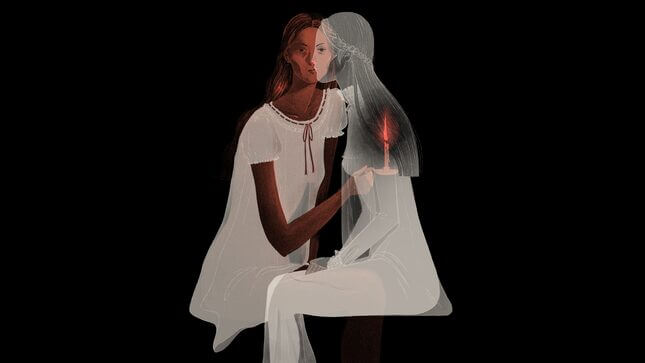
Image: Chelsea Beck/GO Media
When I was in college in the Hudson Valley, I rented an apartment off-campus in the rectory of a very small Victorian church. I lived above a classics professor, with my bedroom overlooking the graveyard and the woods beyond. Sometimes, late at night, I’d hear the organist practicing. He was also the caretaker of the church, and the town handyman. He liked, he explained once, to practice at night in the summer when the heat had abated. So at midnight, he’d drive his old truck to the tiny parking lot and slip inside the blue clapboard building. The stained glass would light up with the flick of a switch, and soon after I’d hear hymnal music drifting through my open bedroom window.
It was a beautiful church, rural and quiet with very few congregants, all of them elderly. I can’t remember who told me about the ghost. It was probably the classics professor, who had rented his space for decades, building a quiet, elegant, solitary life. But I’ll never forget the story. According to local legend, there was once a preacher who lived in the modest blue building with his wife and child. Even before the child died, the wife was unhappy. She didn’t take well to the small town or to the dampness that drifted off the nearby river. When her child drowned, she became bereft. She followed her child to the grave (death by broken heart?), but she didn’t stay there. She walked at night, in a long white nightgown, around the cemetery. Once, during an August thunderstorm, I thought I saw her thin form moving among the graves. But perhaps I was just so taken by the way the thunder rolled along the hills in a slow sad duet with the pipe organ.
I don’t believe in ghosts, but maybe I do, just a little. I certainly believe in the power of haunted tales, and the Lady in White is one of the most common structures for ghost stories. She exists throughout the world, from Brazil, where the Dama Branca wanders silently, unable to explain whether she was a victim of an honor killing or died at the hands of her lover, to Estonia where the ghost of a lovesick woman was supposedly immured inside the walls of Haapsalu Castle. Some tales specify that she’s wearing a sleeping dress, others say she’s in bridal garb and others just say she wears a white dress. The stories are most common in American folklore, and she’s often cast as a thin woman with long flowing hair, wearing a Victorian-style nightdress and wandering along roadsides, through cemeteries and churches, under bridges, and through the woods. She exists in contrast to the Woman in Black and the Woman in Red, two other ghostly types that flit through our history. They are always mysterious, dressed in monochrome, lacking distinguishing features— blurred non-people—reeking of sadness. Even in death, what a woman wears is important. Even after death, her outfit still matters.
-

-

-

-

-

-

-

-

-

-

-

-

-

-

-

-

-

-

-

-

-

-

-

-

-

-

-

-

-

-

-

-

-

-

-

-

-

-

-

-








































